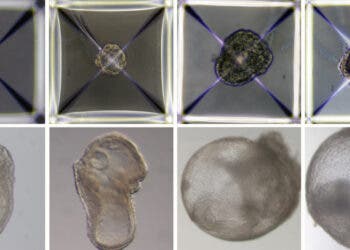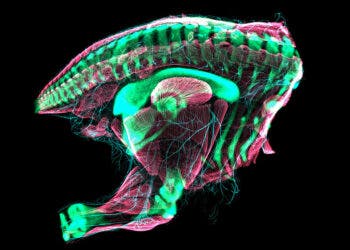On a summer morning in London, Ohio, Lindsey and Tim Pierce welcomed their newborn son, Thaddeus Daniel Pierce. Born on July 26, his arrival was a long-awaited joy for the couple. But what makes Thaddeus unique is how long he waited to be born. His embryo had been frozen for more than 30 years.
“We had a rough birth, but we’re both doing well now,” Lindsey told MIT Technology Review, which first reported the story. “He is so chill. We are in awe that we have this precious baby.”
Thaddeus’s story stretches back to the early 1990s. He was frozen as an embryo back in 1994, long before smartphones or social media existed. He’s the biological sibling of a 30-year-old woman and the child of a woman who once thought she might never have children at all.

Three Little Hopes and a Decades-Long Wait
The embryo had originally belonged to Linda Archerd, now 62, who shared her story in detail with MIT Technology Review. After struggling to conceive in the early 1990s, she created four embryos through IVF—one led to a daughter, and the rest were frozen for decades. She called them her “three little hopes.”
After divorcing, she retained custody of the embryos. Her plan had always been to try for another child, but menopause changed those expectations. Yet she couldn’t discard the embryos or donate them anonymously. “It’s my DNA; it came from me … and [it’s] my daughter’s sibling,” she said.
Eventually, she discovered embryo “adoption”, a pathway offered by a handful of mostly Christian agencies that treat embryos as prospective lives. Archerd chose to work with the Snowflakes program, run by Nightlight Christian Adoptions. But even they had reservations.
“So many places wouldn’t even take my information,” she said. Embryos stored that long ago were often frozen using outdated methods, which made them more fragile and unpredictable. But Snowflakes agreed to try—if she could recover the original medical records.
“I still remembered his phone number by heart,” she said of her 1990s fertility doctor, who unearthed handwritten records from his Oregon basement. The embryos officially entered the agency’s matching pool in 2022.
The Perfect Match
Lindsey and Tim Pierce had spent seven years trying to conceive. They explored adoption, fertility treatments, and everything in between. When Lindsey found Snowflakes during an internet search, the couple agreed they’d be open to “anything and everything.”
That flexibility led them to Archerd’s embryos, and to Rejoice Fertility, an IVF clinic in Knoxville, Tennessee.
“We didn’t go into it thinking we would break any records,” Lindsey said. “We just wanted to have a baby.”
Dr. John Gordon, the clinic’s founder, had long wrestled with the moral and logistical questions posed by millions of frozen embryos worldwide. “We have certain guiding principles, and they’re coming from our faith,” he said. “Every embryo deserves a chance at life.”
Rejoice Fertility had already helped another couple, back in 2022, deliver twins from embryos frozen in 1992. Rachel and Philip Ridgeway were the previous record holders.
The Pierce embryo came in a sealed plastic vial. The process of thawing involved precise handling and rapid reanimation in warm media. All three embryos survived the thawing, but one stopped growing. The remaining two were transferred to Lindsey’s uterus on November 14.
Only one developed. Thaddeus.

A Baby Brother from the 90s
Archerd looked at the first photos of Thaddeus and immediately noticed the resemblance. “The first thing that I noticed when Lindsey sent me his pictures is how much he looks like my daughter when she was a baby,” she said. “I pulled out my baby book and compared them side by side, and there is no doubt that they are siblings.”
The family hopes to meet in person one day. For now, it’s enough to marvel at what science—and persistence—has made possible.
Thaddeus’s birth raises complex questions that hover over the field of assisted reproduction. What is the lifespan of a frozen embryo? Should old embryos be given a chance at life decades later? What about the rights and roles of donors, recipients, and the resulting children?
There are no easy answers. But the numbers are rising. In the United States, about 2% of births now result from IVF. In the UK, the figure is even higher—3.1% of all births, including 11% of those in women aged 40 to 44.
Meanwhile, storage tanks across the world are quietly filling with suspended beginnings—millions of frozen embryos that may never be used, or may one day surprise everyone.
And somewhere in Ohio, a newborn sleeps completely unaware that he is already a small part of medical history.






